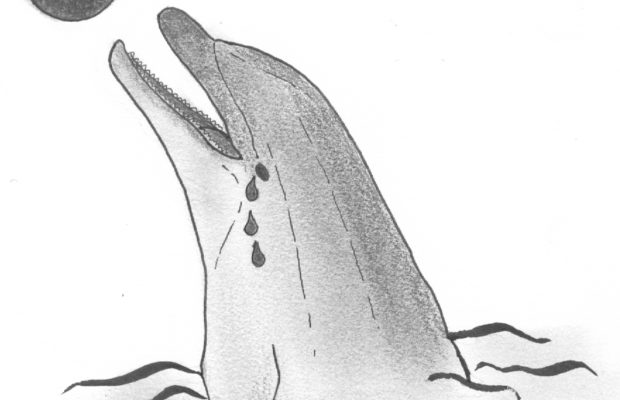Dolphins should roam free

“Just because it feels good, it doesn’t make it right,” wrote environmental philanthropist Shari Sant Plummer after playing with bottlenose dolphins at the National Aquarium–dolphins that had been born in captivity and do frequent shows for onlookers like her to marvel at.
The famously smiley animals hop along the glistening waters of their tanks and do endless tricks. They squint in joy when being pet by audiences, like they are superstars on the red carpet with the spotlight shining brightly down on them. However, there are more than a couple things wrong with romanticising the captivity of dolphins and other animals this way.
The high chlorine levels in the water can damage a dolphin’s eyesight, urging them to float near the surface where there are less chemicals and less pain. They squint to lessen the burning. They are constantly being pet and exposed to the hot sun, and their skin can develop rashes and bruises that need to be treated with various creams and ointments.
In the wild, dolphins live on fresh fish that they catch themselves, but in captivity, they have to be trained to feed on dead, frozen fish. Beyond their unideal eating situation, they’re kept hungry before their performances (a tactic called ‘food deprivation training’) to ensure the best results for their audiences, which means that doing tricks is often the only way these animals will be fed.
According to science.org the average dolphin lifespan is anywhere from 40-50 years, but for a captive dolphin this number can be cut in half. No tank can properly replicate the kinds of predators and threats they deal with in the wild, so dolphins born in captivity are highly unlikely to survive if they are ever released into their natural habitat.
Visiting dolphins in their natural habitats can be an educating and fun experience, and you can actually take a peek into how these animals make their way in their world naturally. Grabbing a bag of popcorn and watching a dolphin show might seem like a harmless feat, but the unnatural stress and extensive physical damage it does to these animals is just not worth the trip.



